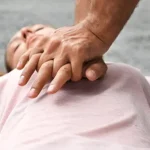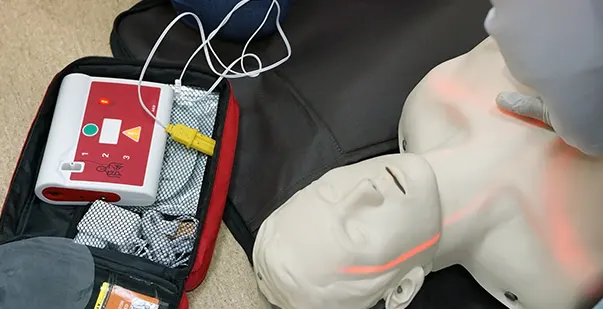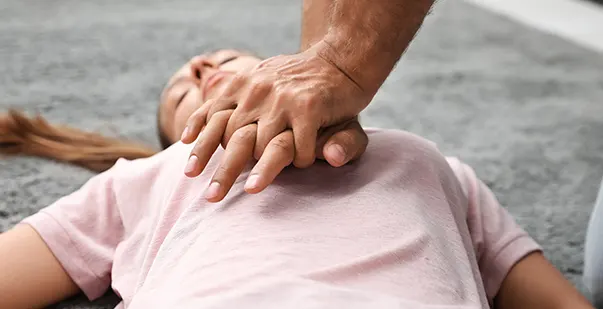Getting a BLS (Basic Life Support) certification can equip you with the necessary skills to respond effectively in emergencies. If you are a healthcare professional or a first responder, a BLS certification can help you tackle critical emergencies.
Over 56.8% people in the US are knowledgeable about BLS (Basic Life Support), that is how important it is. In this blog, we will highlight 10 concise steps that will help you navigate through the process of acquiring a BLS certification.
So if you want to know how to get BLS2 certification, you have come to the right place. This guide will help you sign up for an ideal course and gain the competence and confidence required to save lives in moments of crisis.
How to get BLS certification online in 10 Steps?
Obtaining a Basic Life Support certification gives you a convenient and flexible way to enhance lifesaving skills. This is a 10 step clear guide that will help you navigate through the process efficiently-
- Research Accredited Providers: Begin by researching reputable organizations or providers that offer BLS certification courses online.
- Choose a Course: Select a BLS certification course that meets your needs and schedule, ensuring it is accredited by recognized bodies.
- Register for the Course: Enroll in the chosen BLS certification course through the provider’s website or registration platform. Read the content available on the website and go through their services.
- Complete Online Modules: Participate in the online learning modules, which typically cover topics such as CPR techniques, AED usage, and basic life support protocols.
- Interactive Training: Engage with interactive elements such as videos, quizzes, and simulations to reinforce your understanding of BLS concepts.
- Practice Skills: Utilize virtual practice sessions to familiarize yourself with hands-on skills, including chest compressions and rescue breathing.
- Schedule Skills Assessment: Arrange a time to complete the hands-on skills assessment component of the course, either remotely via video conferencing or in person at a designated facility.
- Attend Skills Assessment Session: Participate in the skills assessment session under the supervision of a certified instructor, demonstrating proficiency in BLS techniques.
- Receive Certification: Upon successful completion of the online course and skills assessment, receive your BLS certification electronically or via mail, depending on the provider’s policy.
- Maintain Certification: Stay up-to-date with BLS guidelines and renewal requirements to ensure your certification remains valid, typically needing renewal every 1-2 years.
Read More: What to do during an asthma attack?
How can a Basic Life Support certification help?
Along with equipping yourself with lifesaving skills, a Basic Life Support certification also benefits an individual in multiple ways. Let’s go through them one by one-
- Immediate Response Capability: BLS certification enables individuals to confidently and immediately respond to medical emergencies, such as cardiac arrest or choking incidents.
- Increased Survival Rates: Properly administered BLS techniques, including cardiopulmonary resuscitation (CPR) and the use of automated external defibrillators (AEDs), can significantly increase the chances of survival for individuals experiencing cardiac arrest.
- Essential Workplace Requirement: Many healthcare and emergency response professions require BLS certification as a requirement for employment, ensuring a competent and prepared workforce.
- Empowerment in Everyday Life: BLS training empowers individuals to take action in emergencies outside of the workplace. For example in public settings or within communities, potentially saving the lives of loved ones or strangers.
- Confidence and Preparedness: BLS certification invokes confidence and preparedness in individuals. This enables them to remain calm and take decisive action when faced with life-threatening situations.
Read More: What is the importance of CPR training for construction workers?
- Professional Development: For healthcare professionals, obtaining BLS certification demonstrates a commitment to patient care. This enhances career prospects by expanding skill sets and qualifications.
- Compliance with Regulations: BLS certification ensures compliance with regulatory requirements in various industries, including healthcare, childcare, fitness, and education.
- Enhanced Team Dynamics: BLS training encourages effective communication and teamwork among individuals trained in life-saving techniques. This encourages a collaborative approach to emergency response.
- Personal Fulfillment: Knowing that you possess the skills to potentially save a life through BLS certification can provide a profound sense of personal fulfillment and purpose.
- Contribution to Public Health: By disseminating BLS knowledge and skills within communities, BLS-certified individuals contribute to public health initiatives aimed at reducing mortality rates associated with cardiac events and other medical emergencies.
Read More: What are the common symptoms of heart attack in women?
Conclusion
Now that we have given you insights on how to get BLS certification, you can enroll in an accredited course by considering the tips mentioned. Getting a BLS certification is not just about getting a credential. It is an investment towards making a true difference in emergency situations.
Beyond the immediate benefits, a basic life support certification invokes the sense of preparedness and empowerment. It also contributes to healthier and safer communities. So don’t wait any longer, grab your chance to bring a significantly positive change in the face of adversities.













